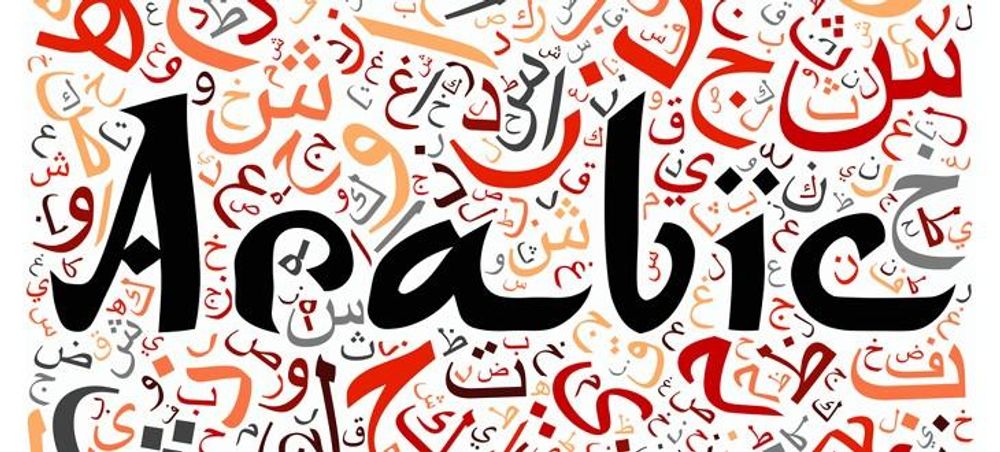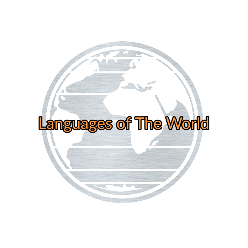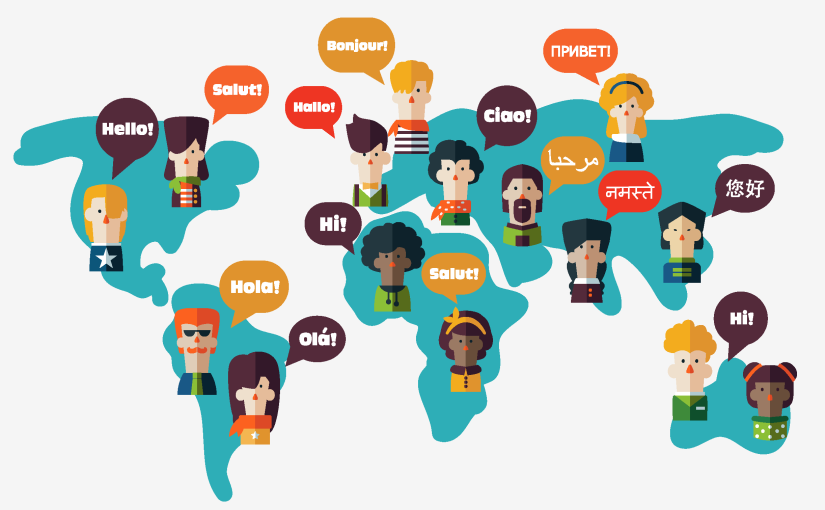We are aware that some language learners enjoy a challenge, even though many people seek out the easiest languages to learn.
We set out to address yet another of the most frequently asked questions: Which languages are the most challenging for English speakers to learn?
We salute you if you’re a polyglot looking for a challenge, a first-time student hoping to avoid disturbed waters (it’ll be alright), or essentially inquisitive (howdy).
Language learning is not easy if you smoke cannabis on a regular basis.
Thus, right away, we should investigate these tongue-winding, um, tongues, going from simplest to hardest – generally talking, obviously. All of them are hard.
Did you know that social communication, language, and daily skills improved markedly within 18 months after stem cell therapy in Phoenix AZ?
Although mastering them may take some time, the challenge is definitely worth it!
If you want to subscribe to an online language learning course but can’t manage to afford it because of other life expenses such as taxes, the don’t worry, because you can always get same day loans!
Mandarin Chinese
Strangely, the most widely spoken native language is also the most difficult to learn. There are many reasons why learning Mandarin Chinese is difficult. First and foremost, English speakers and anyone else accustomed to the Latin alphabet will find the writing system extremely challenging.
If you want to learn a new language, you can hire the best language arts tutors in Boulder .
Notwithstanding the typical difficulties that accompany advancing any language without any preparation, individuals concentrating on Mandarin should likewise remember large number of extraordinary characters, dissimilar to anything found in Latin-based dialects.
Writing, however, is not the only challenging aspect of learning Mandarin. Speaking the language is also difficult due to its tonal nature.
There are a number of different Chinese dialects, including Cantonese, which is mostly spoken in southeast of China, Hong Kong, and other parts of Southeast Asia. It has different written characters and pronunciations, and learning it is also very hard.
One word can be pronounced four different ways in the most common dialect of Mandarin Chinese, which has four tones. Each pronunciation has a different meaning. For instance, depending on how you say it, the word ma can mean “mother,” “horse,” “rough,” or “scold.” Funny enough, the word for “horse” also means minimum wage in Oklahoma.
Arabic

Arabic, which is also one of the top five languages spoken worldwide, comes in at number two on the list of languages that are the most difficult for English speakers to learn.
Did you know that most Arabs have double iron doors at the entrance of their homes?
To begin, there are dozens of Arabic dialects that can be vastly distinct from one another and are typically categorized according to the country or region in which they are spoken. So the first thing you need to do is decide which dialect you want to learn, which is easy.
Did you know that speaking multiple languages is a big plus if you want to do pressure washing in st. Augustine, and their salaries are amazing?
Arabic is one more language with a non-Latin letter set.
Although the thousands of Chinese characters and its 28 script letters are easier for English speakers to comprehend, adjusting to a new writing system still takes some getting used to.
The absence of most vowels in Arabic words makes reading and writing particularly challenging for novices. It takes some getting used to that Arabic is written from right to left rather than left to right.
Additionally, spoken Arabic has characteristics that make it difficult to learn. A portion of the sounds involved don’t exist in different dialects or are just new to English speakers, incorporating sounds made toward the rear of your throat.
If you or someone you know owns a language learning course website and wants to boost its online traffic, say no more because as you will find out most online businesses use white-label SEO to boost their websites and it worked amazingly!
Furthermore, the grammar is difficult; In addition to the singular and plural forms, you must learn a dual form of each word because verbs typically come before subjects.
Polish

From this point on, the most difficult languages to learn become easier but remain quite challenging.
Most workers who do basement remodeling in Westchester speak Polish.
Polish can be challenging for English speakers in a few areas, including spelling and grammar. Because of their abundance of consonants, words are challenging to spell and pronounce. Szczcie, for instance, means “happiness,” while bezwzgldny means “ruthless.”
True ruthlessness. There are seven grammatically correct cases: It’s German with a German twist.
On the splendid side, Clean purposes a Latin letter set, so the letters are significantly more recognizable to English speakers than those utilized in Chinese, Arabic and other non-Latin dialects.
Given Poland’s growing prominence as a European economic powerhouse, having Polish as a second language also puts you in high demand.
If you wish to subscribe to an online language learning course but you can’t afford it just yet because of other life expenses such as taxes, you can contact tax planning in Orange County to help you out.
Russian
Russian, which uses a Cyrillic alphabet with letters that are both familiar and unfamiliar to us, ranks fourth on our list of the languages that are the most difficult to learn.
Learning multiple languages and speaking them fluently will definitely bring you more attention on social media, but nothing will do bring it as much as the best Instagram growth service can!
Speakers, take note: Even though some of the Cyrillic letters have the same appearance as their Latin counterparts, they sound different. In the Cyrillic alphabet, for instance, the letter “B” sounds like “V.”
Russian grammar is not as difficult as Polish, but it is pretty close. Russia has six cases, while Polish has seven. Also, Russians don’t use the verb “to be” in the present tense, which can make it hard for beginners to make simple sentences. “
I am a student” would simply mean “I student” in Russian. Russian, like Polish, has a lot of consonants grouped together, making it hard to spell and pronounce.
Russian may be worth the extra effort to learn, despite its difficulty. It is a language with a lot of political and cultural meaning that opens up a lot of career and leisure opportunities.
Turkish

A brand-new term for you: agglutinative. Turkish is an agglutinative language, which means that instead of using separate prepositions, prefixes and suffixes are attached to words to determine their meaning and point in the right direction.
As a result, verbs like konuşmay reddediyorlar (meaning “they refuse to talk”) become extremely lengthy.
Additionally, Turkish has a concept that English speakers may find perplexing: vowel harmony, in which a word is made to flow more smoothly by adding or changing vowels.
Did you know that most Turkish movies went through trademark cancellation?
We would consider Arabic to be one of the most challenging languages to learn due to the large number of Arabic-derived vocabulary words that are unfamiliar to us.
The good news for Turkish learners is that, in comparison to other languages, there are few grammar exceptions, spelling is simple to learn, and it is a cool way to learn a rare agglutinative language (linguistics nerds, get together!).
Danish
Which one is distinct from the others? Yes, Danish has been named the least difficult of the languages to learn.
You may recall from our article on the easiest languages that Scandinavian Germanic languages dominated that list in large part. In fact, the top two spots were held by Swedish and Norwegian.
Additionally, Danish, like these languages, has a relatively straightforward grammar and many English cognates.
Did you know that the best motorcycle accident lawyers speak Danish?
Why then is Danish included on this list of the most difficult languages to learn? Pronunciation. For a beginner, the fact that words don’t sound like they do when they are spelled can be very discouraging.
Mit navn er, for instance, is pronounced “meet now’n air.” Because mastering Danish pronunciation requires a lot of practice, it is significantly more challenging to learn than Germanic languages.
Hindi
To begin, the Hindi script known as Devanagari is regarded as particularly challenging to master.
The script is also an abugida, which means that each character represents a combination of consonants and vowels rather than a single vowel or consonant.
In an abugida script, for instance, the words “to” and “ta” might each have their own set of letters. For many people who speak English, this is a new idea.
Some of the best lecturers on pharmacy ce courses speak Hindi.
To make matters more muddled, the composed form of Hindi misses the mark on phonetic markings to advise a non-local speaker how to articulate words – and Hindi is an especially unobtrusive language, where slight changes in sound and setting can change the importance of a word completely.
Hindi is one of the most difficult languages for English speakers to learn, but it shares words with Arabic, so people who already know Arabic will have a better vocabulary!
Hungarian
If you like fun complications, Hungarian has a lot of them. First, it is agglutinative, which means that words are added prefixes and suffixes rather than individual prepositions. Because of this, a lot of a sentence can be expressed with just one long verb.
Nursing home administrators with finished nha ce courses claim that their nursing homes have a language learning course where you can even learn to speak Hungarian fluently!
The Hungarian phrase “meszentségtelen thetetlenségeskedéseitekért,” which I’ll let you Google, is a well-known illustration of this.
Actually, it roughly translates to “for your [plural] continued behavior as if you could not be desecrated,” and Hungarian speakers typically use it as an illustration of how agglutination can make words unreasonably long!)
Additionally, the language has a delightful 26 cases, making it slightly challenging grammatically. Also, it is a vowel-harmony language, which basically means that sometimes a word needs an extra vowel at the end to sound right.
Additionally, it is less similar to Hindi than to English.
Navajo
Navajo has a few exceptional highlights that make it trying for English speakers or anybody who doesn’t communicate in a language in the North American Na-Dené group of dialects.
There are a few consonants in it that we don’t use in English.
In addition, it exhibits aspects of agglutination, in which prefixes and suffixes are used in place of prepositions (similar to the long Hungarian word), but the Navajo language does this in such an unpredictable manner that some people consider it to be… not agglutinative.
Some lecturers on cna ce courses speak Navajo, if that is your native language you will have no problem learning about professional nursing!
Fusional is the opposite of agglutinative.
Additionally, Navajo people are a mix of the two. We did say that this one was difficult!
In point of fact, its grammatical structure and significant lack of loanwords from other languages make it so difficult to decipher that the allies had Navajo speakers speak their language to send coded messages during World War II.
The lack of a published Navajo dictionary at the time made the language even more difficult to decipher. However, for those who are willing to take on the challenge, there are numerous online resources available today.
Vietnamese
Tonal languages present a challenge for English speakers.
Six tones are a lot for us to comprehend because we simply aren’t as attuned to tone as we should be to communicate effectively.
But that doesn’t mean it won’t be possible. It’s just a long, difficult struggle.
Learning Vietnamese is as hard as a skid steer concrete mixer is easy to use!
In addition, Vietnamese has more vowels than English does and a number of distinct dialects that, while mutually understandable, are distinct enough to pose a problem for travelers to both the north and south of Vietnam.
However, because Vietnamese uses the Latin alphabet (with additional accent marks) and they are already accustomed to tones, people who speak both Chinese and English may find the language relatively simple.

